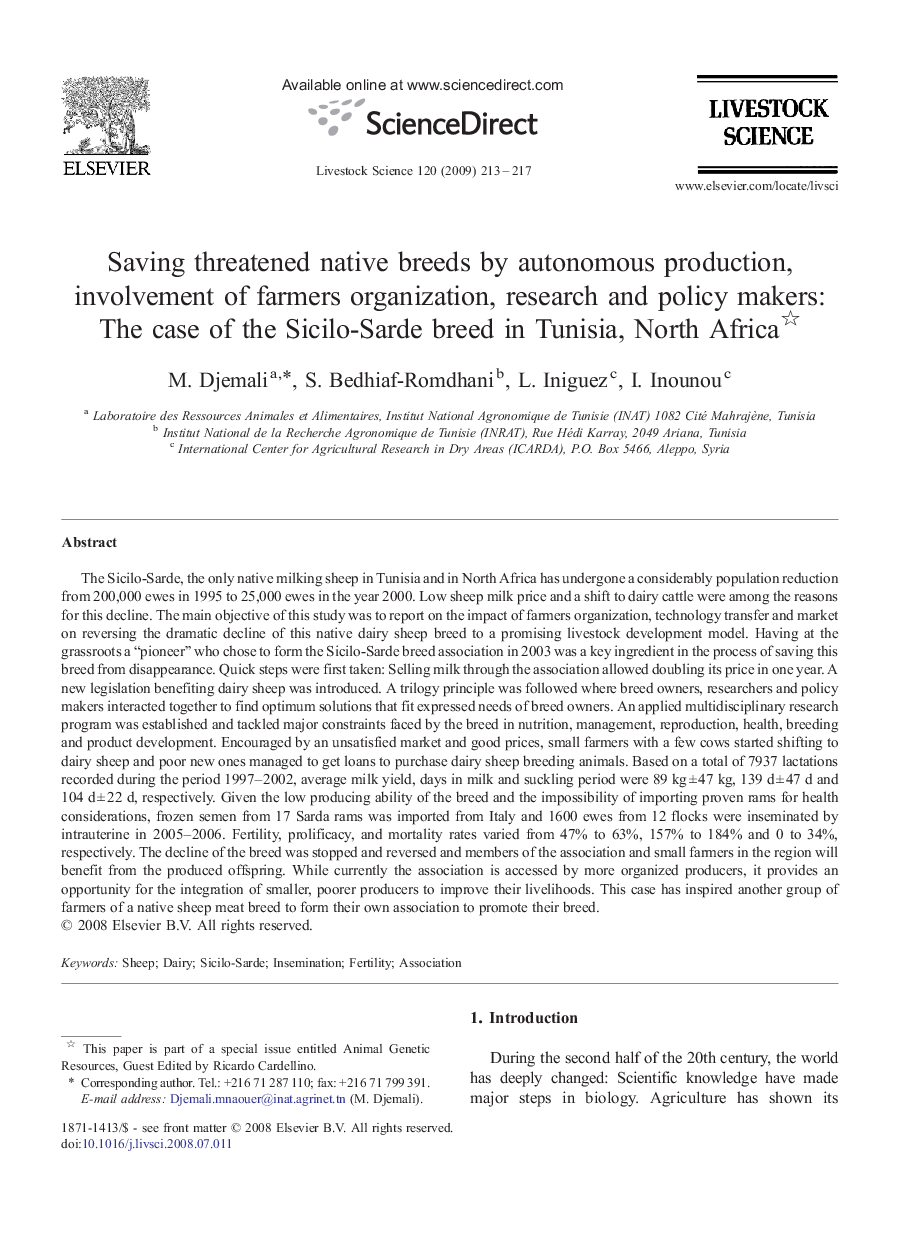| کد مقاله | کد نشریه | سال انتشار | مقاله انگلیسی | نسخه تمام متن |
|---|---|---|---|---|
| 2448316 | 1554012 | 2009 | 5 صفحه PDF | دانلود رایگان |

The Sicilo-Sarde, the only native milking sheep in Tunisia and in North Africa has undergone a considerably population reduction from 200,000 ewes in 1995 to 25,000 ewes in the year 2000. Low sheep milk price and a shift to dairy cattle were among the reasons for this decline. The main objective of this study was to report on the impact of farmers organization, technology transfer and market on reversing the dramatic decline of this native dairy sheep breed to a promising livestock development model. Having at the grassroots a “pioneer” who chose to form the Sicilo-Sarde breed association in 2003 was a key ingredient in the process of saving this breed from disappearance. Quick steps were first taken: Selling milk through the association allowed doubling its price in one year. A new legislation benefiting dairy sheep was introduced. A trilogy principle was followed where breed owners, researchers and policy makers interacted together to find optimum solutions that fit expressed needs of breed owners. An applied multidisciplinary research program was established and tackled major constraints faced by the breed in nutrition, management, reproduction, health, breeding and product development. Encouraged by an unsatisfied market and good prices, small farmers with a few cows started shifting to dairy sheep and poor new ones managed to get loans to purchase dairy sheep breeding animals. Based on a total of 7937 lactations recorded during the period 1997–2002, average milk yield, days in milk and suckling period were 89 kg ± 47 kg, 139 d ± 47 d and 104 d ± 22 d, respectively. Given the low producing ability of the breed and the impossibility of importing proven rams for health considerations, frozen semen from 17 Sarda rams was imported from Italy and 1600 ewes from 12 flocks were inseminated by intrauterine in 2005–2006. Fertility, prolificacy, and mortality rates varied from 47% to 63%, 157% to 184% and 0 to 34%, respectively. The decline of the breed was stopped and reversed and members of the association and small farmers in the region will benefit from the produced offspring. While currently the association is accessed by more organized producers, it provides an opportunity for the integration of smaller, poorer producers to improve their livelihoods. This case has inspired another group of farmers of a native sheep meat breed to form their own association to promote their breed.
Journal: Livestock Science - Volume 120, Issue 3, February 2009, Pages 213–217